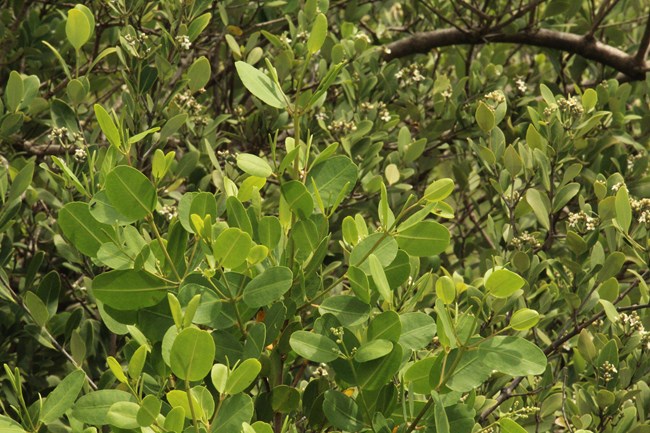
NPS There are three different species of mangrove found in Florida- the black, the red, and the white. The black mangrove is the most cold tolerant, while the white is the least tolerant of freezing weather. Because of this susceptibility to sustained cold weather, and because of their relatively rapid rate of expansion due to water-borne propagules, mangroves are like a natural barometer of long-term climate changes. So it was with a fair amount of excitement, but not total surprise, that park staff reacted to the news in September 2018 that white mangroves (Laguncularia racemose) had been documented in the park for the first time! The news was delivered by botanists from the Smithsonian Institution and Villanova University who were conducting research in the surrounding Guana-Tolomato-Matanzas NERR. Thus, another species was added to the park’s plant list (which now makes for 250 documented species, by the way). Perhaps ironically, these tropical species that are expanding north with the warming climate may also be one of nature’s best defenses against some of the negative effects of global warming. For one thing, mangroves absorb and sequester vast amounts of carbon dioxide, one of the predominant greenhouse gases. Because mangroves grow in saturated soils that are low in oxygen content (anaerobic), bacteria and fungi that normally break down organic matter are not as efficient as they would be in well-aerated (aerobic) soils. Thus dead plant matter accumulates and eventually turns into peat, trapping the carbon from the plants’ tissues for upwards of millennia. Also, the complex intertwining of mangroves’ roots and branches forms a complex latticework that is very efficient at trapping sediment and absorbing the energy of wind and waves. There may be no better natural system for stabilizing and building a shoreline while protecting it and the uplands behind it from rising seas and associated storms. Unfortunately, as with most coastal habitats, mangrove forests have been removed over the years to make way for human development. (At least 35% of global mangrove habitat has been lost since 1980.) Maybe this time we should play it smart and make way for the mangroves! 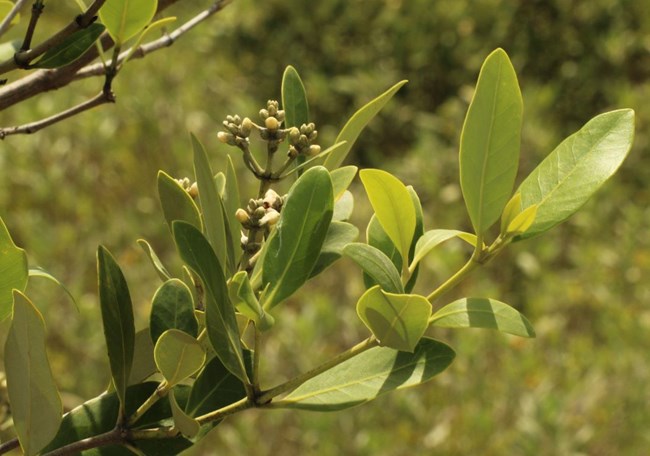
NPS Black Mangrove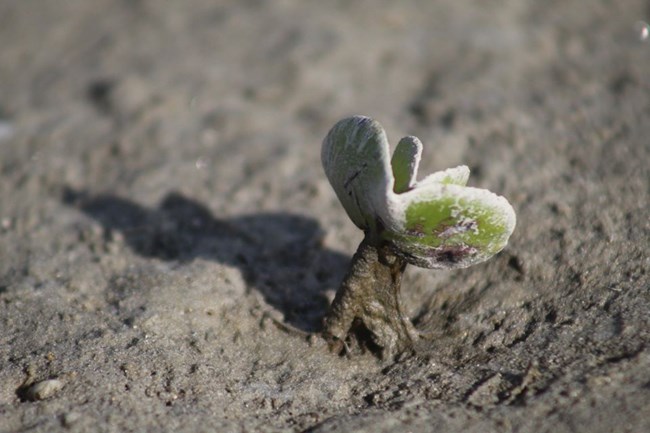
NPS Black Mangrove Seed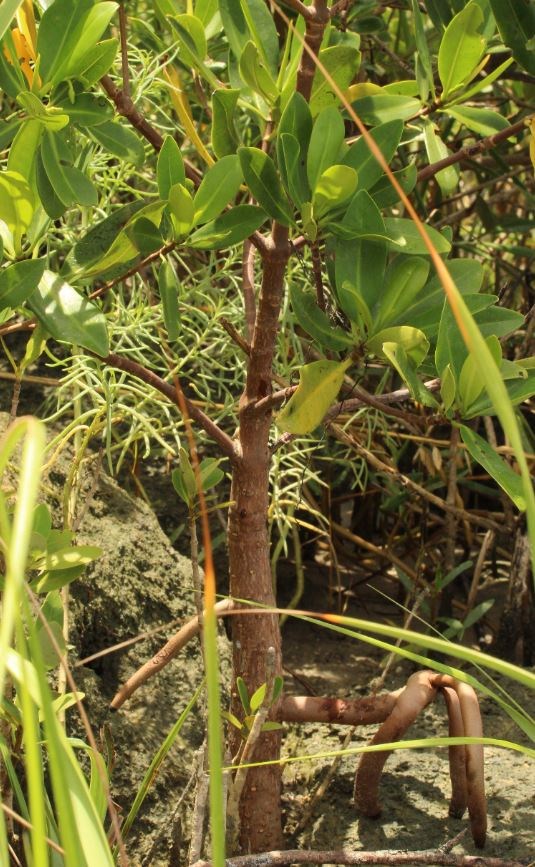
NPS Red Mangrove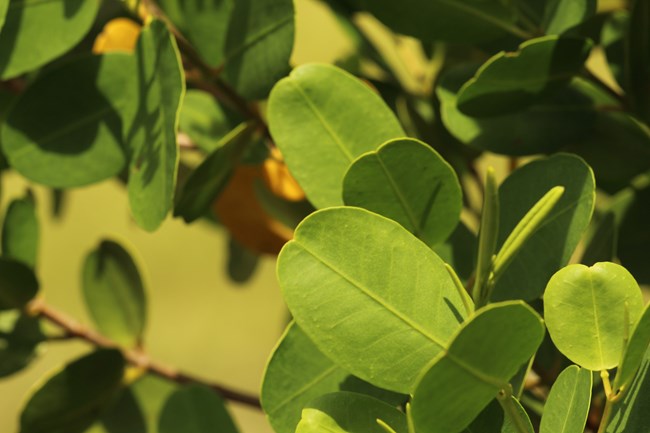
NPS White Mangrove |
Last updated: January 7, 2021
